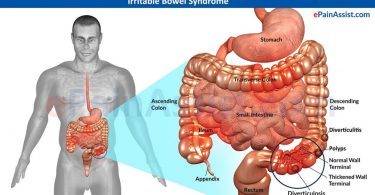Theoretically, there should have been no chronic patients in homoeopathic
medicine. In practice, Hahnemann found himself saddled with chronics and
invented his psora theory to account for them.
What are the reasons why a patient does not respond at once to a well-chosen homoeopathic remedy?
I have spent some time reviewing the persistent attenders at my outpatient
clinic at the Bristol Homoeopathic Hospital. I should say that as organized by the Regional Hospital Board, and more recently by the Board of Governors of the Teaching Hospital, this is a psychiatric outpatient session, and the majority of the cases referred to me are patients suffering from some form or other of psychosomatic disorder.
I have taken as a criterion of chronicity, regular attendance at the outpatient
department for at least six months.
I find I have had forty such patients on my files over the last two years. I have used the classification suggested by psychologists Levinson and Meyer in analysing the results. There are five classes.
The I Class-The patients are completely relieved of symptoms.
The II Class-The patients were improved. Their slight residual symptoms
did not justify further treatment.
The III Class-Some improvement but persistent symptoms still required treatment.
The IV Class-The symptoms were unchanged.
The V Class-The patients were worse.
To deal with the I class of patients; completely relieved. These three patients
were young; the youngest 5, the oldest 22.
The five-year-old was a little girl with true migraine-visual aura, hemicrania,
bilious vomiting. The home situation was a tense one; her father was a practising homosexual and family tensions were severe.
A nine-year-old boy, liable to acidosis attacks; another tense family situation,
as his father was having an affair with his friend’s wife who lived next door.The mothers of both these children needed considerable support from my colleague, the psychiatric social worker.
The last was a young man of 22, with a severe post-concussion syndrome following a motor-cycle accident. Here understandably there was a strong family conflict, his mother tending to be over- protective and restrictive lest further accidents occurred; the young man eager to shake off plasters and neck braces and resume his adventurous leisure.
At the other end of the scale, there was only one patient in Class V; he
deteriorated. This was a frankly psychiatric case of severe hypochondriasis, with delusions about his internal organs; in spite of his belief that his urine circulated through his soft tissues, and that his bladder was full of stones, he continued to work for many months, but eventually his exasperated family called on another psychiatrist who admitted him to a mental hospital.
Of the Class IV there were three patients whose symptoms by and large were unchanged-they were all over 60. The man aged 61 was as severe a case of effort syndrome as I have ever seen. A co-respondent in a divorce case, he married the divorcee, and a few years later was deserted, divorced in turn this first wife and later married again. He was a markedly obsessional type with overwhelming feelings of guilt. Response to homoeopathic treatment was only fleeting and he continually relapsed.
Of the two women, one aged 67 had suffered from a tuberculous sacro-iliac
joint, for which she had been operated. As a middle-aged woman she had been liable to migraine. Her teenage son developed a florid schizophrenic condition but made a complete recovery after five years. She had never recovered from the strain of those five years.
The other woman, aged 73, was a shopkeeper with a brilliant son, who had 1.1- distinguished university career, and as a scientist drained away to the USA. She was very tied up to this son, and her rheumatism fluctuated according to whether her son returned on leave to this country or went back to his American University. She was also very accident prone, and these accidents were liable to occur when she saw her son off on the boat or plane. These separations were the culmination of an unhappy life. Her father had died when she was an infant. When she was 8 her mother married an alcoholic. Her mother died when my patient was 15; she left home, lived in digs, married a delicate husband who died before her children were grown up: her daughter was killed in a road accident, so her clever son was all she had left. She was a Lycopodium subject, but the occasional spaced dose did not always relieve, the result seemed to depend on whether her son was coming or going.
Unlike the young subjects in Class I who made a complete recovery, these
elderly subjects in Class IV could only make a temporary and very limited
response to homoeopathic remedies, and it was not possible to say that their condition had really changed over the years I have treated them. Nevertheless they continued to attend, in spite of their very obvious disabilities of lameness, dyspnoea, stiffness.
All three of these elderly patients travel more than 3 miles to my clinic, to
spend at the most ten minutes with me. They have to wait a further period while their prescriptions are made up, and have another 3 miles home. The whole expedition will involve them in at least 3 hours.
What do these patients want of their dcctorj As Drs Brown and Keeling point
out in their paper “A Basic Misunderstanding”, the patients want a relationship with the doctor that satisfies their peculiar needs; as they indicate, the doctor is cast by the patient for the role of a father figure-and the angry “child”, the patient, comes again and again to show the father doctor how useless his remedies are; or the dependent “child” as patient comes back but can never be cured because a cure would mean the “father” would discharge, that is reject him: As they conclude, these doctors suggest that the assumption that the patient has come to be cured of his symptoms has often to be abandoned.
Having considered the two extremes of this group of chronic patients, I would like to discuss the two typical middle groups.
Firstly, the patients who improved, but still had persistent symptoms that required treatment. There were 12 of these, 9 women with ages ranging from 25 to 62, and 3 males, aged from 9 to 56. These included 2 asthmas, 1 hay fever, a tension headache, a facial neuralgia, a renal colic, a diverticulitis, an angina, a threatened gangrene, a varicose vein, an hysterical paresis.
But the personal background to these long continued illnesses ranged from a schizophrenic son, a wayward daughter, a son with an illegitimate child by a schoolgirl, a husband’s posting from London to the provinces, a nagging mother, a childless wife, a mixed marriage and disapproving parents.
For example, Mrs W., with threatened gangrene of toes. Her husband had
retired, and moved from London to a seaside bungalow. There were lawsuits over the sale of the London house, and Mrs W. was separated from her married son and her grandchildren. She found the bungalow cold and uncomfortable and disliked her neighbours. She was lonely, grieved over her separation from her beloved grandchildren, resented her husband’s decision to move so far from the city where she had spent 50 years of her life.
Secole was her remedy; sometimes she responded well to it, but on at least
three occasions there was no response, and these were times when either she had bad news about a sick grandchild, or her husband was ill, and she had no help in the bungalow.
Another example was Mrs M. aged 56. She had had a radical operation for
carcinoma of the breast and was left with a swollen arm, due to post-operative lymphatic obstruction.
She was liable to very severe neuralgia. Her main preoccupation was not about the possible recurrence of cancer, but with her wayward daughter who was having an affair with a married man. She was very rejecting of this daughter, wanted to turn her out of the house, but her husband would not allow this saying that the affair would come to an end, and his daughter must have a home to come back to. Mrs M.’s neuralgia was worse when her daughter was at home, and on the whole better when her daughter was away.
Her remedy which gave the most relief was Lachesis, but at least on one
occasion, Lachesis did not relieve, and this coincided with a terrific family row involving Mrs M., her husband and daughter.
And finally to discuss the last group. The patients who improved, who still
had residual symptoms, but did not require treatment. There were 11 of these, 3 men ages 40-65,8 women ages 13-63.
There were 6 cases of disabling headaches (one a true migraine), one rheumatism, one backache, two cases of abdominal pains, one case of frequency.
Of the men, one man who had survived several crashes in the Royal Air Force crumpled up after the death of his second wife; another man, a sergeant major, was retired from the Army on reaching the age limit and found life as a civilian very difficult. The third man had sustained a severe war wound in the head in the ’14-18 war, and now had an invalid wife.
Of the women, one was a girl from a remote hamlet who found life at a tough
Secondary Modern School much more demanding than at her previous village school.
One woman felt threatened by her husband’s impending posting to the
Industrial Midlands; another woman was frightened by her father’s sudden
death from a cerebral hemorrhage; another was taken aback by her husband’s sudden death. One mother was very upset by her daughter’s engagement to a Civil Servant working in Africa; one woman had a violent quarrel with her brother over disposal of her parent’s property required treatment. There were 12 of these, 9 women with ages ranging from
25 to 62, and 3 males, aged from 9 to 56. These included 2 asthmas, 1 hay fever, a tension headache, a facial neuralgia, a renal colic, a diverticulitis, an angina, a threatened gangrene, a varicose vein, an hysterical paresis.
But the personal background to these long continued illnesses ranged from a schizophrenic son, a wayward daughter, a son with an illegitimate child by a schoolgirl, a husband’s posting from London to the provinces, a nagging mother, a childless wife, a mixed marriage and disapproving parents.
For example, Mrs W., with threatened gangrene of toes. Her husband had
retired, and moved from London to a seaside bungalow. There were lawsuits over the sale of the London house, and Mrs W. was separated from her married son and her grandchildren. She found the bungalow cold and uncomfortable and disliked her neighbours. She was lonely, grieved over her separation from her beloved grandchildren, resented her husband’s decision to move so far from the city where she had spent 50 years of her life.
Secole was her remedy; sometimes she responded well to it, but on at least
three occasions there was no response, and these were times when either she had bad news about a sick grandchild, or her husband was ill, and she had no help in the bungalow.
Another example was Mrs M. aged 56. She had had a radical operation for
carcinoma of the breast and was left with a swollen arm, due to post-operative lymphatic obstruction.
She was liable to very severe neuralgia. Her main preoccupation was not about the possible recurrence of cancer, but with her wayward daughter who was having an affair with a married man. She was very rejecting of this daughter, wanted to turn her out of the house, but her husband would not allow this saying that the affair would come to an end, and his daughter must have a home to come back to. Mrs M.’s neuralgia was worse when her daughter was at home, and on the whole better when her daughter was away.
Her remedy which gave the most relief was Lachesis, but at least on one
occasion, Lachesis did not relieve, and this coincided with a terrific family row involving Mrs M., her husband and daughter.
And finally to discuss the last group. The patients who improved, who still
had residual symptoms, but did not require treatment. There were 11 of these,3 men ages 40-65,8 women ages 13-63.
There were 6 cases of disabling headaches (one a true migraine), one rheumatism, one backache, two cases of abdominal pains, one case of frequency.
Of the men, one man who had survived several crashes in the Royal Air Force crumpled up after the death of his second wife; another man, a sergeant major, was retired from the Army on reaching the age limit and found life as a civilian very difficult. The third man had sustained a severe war wound in the head in the ’14-18 war, and now had an invalid wife.
Of the women, one was a girl from a remote hamlet who found life at a tough
Secondary Modern School much more demanding than at her previous village school.
One woman felt threatened by her husband’s impending posting to the
Industrial Midlands; another woman was frightened by her father’s sudden
death from a cerebral hsemorrhage; another was taken aback by her husband’s sudden death. One mother was very upset by her daughter’s engagement to a Civil Servant working in Africa; one woman had a violent quarrel with her brother over disposal of her parent’s property.
But in these individuals, unlike the last group, the circumstances modifiable … The widower began to think of the possibility of a third wife, the husband’s posting to the Midlands did not materialize, the daughter married the Colonial Servant returned to this country when the colony independent, the sergeant major found himself a congenial job in civvy street, the invalid wife, and the invalid husband, made considerable improvement.
For example Mrs S., who suffered from true migraine. Shc was one of
severe cases I have ever seen. I admitted her to hospital for investigat
suspected an aneurysm of a cerebral artery, but tests were negative th.
had the typical EEG recording of a migraine.
At the time of admission, she was spending 3 to 4 days of every week in bed,having two severe attacks each week. Her daughter had become engaged to a man, on leave from Colonial Service. Her remedy appeared to be Phosphorus, but this did not hold when the engagement was officially announced. But there was some improvement on Phosphorus so that she was able to attend her daughter’s wedding, but she relapsed when her daughter sailed for Africa. Faced with a fait accompli, she began to improve, survived a severe car smash without relapse, but when her father died after a stroke, the migraine recurred for a time. She nursed her husband through an illness without relapse, but when her widowed mother came to stay, she had several attacks of migraine, which cleared up when the married daughter came back from Africa on leave. When her daughter’s leave
was over, once more the headaches recurred. In between these domestic crises, Phosphorus appeared to keep her free from migraine for weeks at a time, at thetime of the crises, remedies such as Ignatia and Belladonna, though well indicated, were without effect.
To sum up, in the background of the chronic outpatient is to be found a chronic emotional disturbance, releasing fear, or grief, or resentment, guilt, or anger or shame-or a situation involving loneliness or boredom. Some of these situations involve a mixture of emotions, so that fear, resentment and grief are all combined.
If these emotional reactions are intense enough, neither the constitutional remedy nor the intercurrent remedy seem capable of modifying the
somatic response.
But the patient still needs a relationship with the doctor, depending on his
sympathy and understanding.
REFERENCES
Levinson, F., and Meyer, V., Brit. J. Psychiatry, 65, p. 208.
Browne, K., and Freeling, P., Lancet, 1965, p. 803-.5.
Author: FRANK B’ODMAN, M.D., D.P.M., F.F.HOM.
A paper read at the Triennial Congress of the International Homoeopathic League, London. July 1965.
Source: The British Homoeopathic Journal, January 1966.





